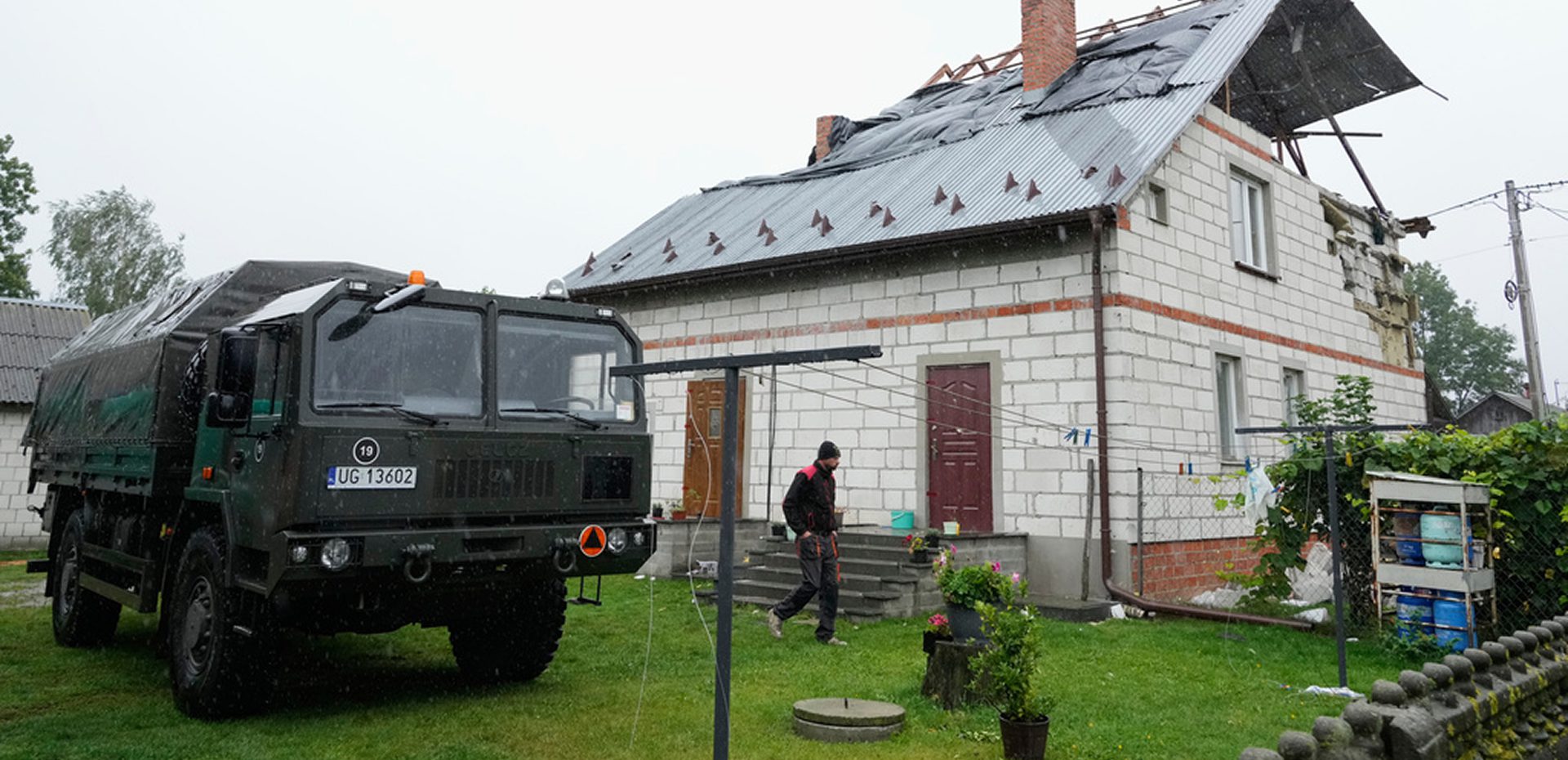The incursion of Russian drones into the airspace of Poland and Romania was most likely deliberate and pursued both military-intelligence and political objectives: to assess NATO’s readiness for conflict and exert psychological pressure on Western societies. In Moscow’s logic, the threat of escalation can serve to limit Western support for Ukraine and reshape Europe’s political landscape. For now, the incidents remain confined to airspace violations, but a failure by the NATO allies to respond decisively could provoke ground-level actions or an expansion of attacks against other states.
The Kremlin’s calculus and expected consequences
In the early hours of 10 September, 19 Russian drones crossed Polish airspace during yet another wave of missile and drone attacks on Ukraine. On 13 September, a Russian drone was detected in Romania. While Russian UAVs and aircraft have previously violated NATO airspace, they have never done so before at this scale. By consciously escalating tensions, the Kremlin is pursuing political goals: to test NATO countries’ ability to defend their borders and simultaneously to sow doubt about the reliability of the Alliance’s collective defence. In doing so, Moscow aims to exert pressure on public sentiment in Europe, fostering a sense of vulnerability and uncertainty about NATO’s ability to protect its member states.
The drone incursions served not only political but also military purposes. The Kremlin likely used them to probe NATO’s air defences, collecting data on optimal flight trajectories, air defence radar frequencies, and the scramble times and response patterns of NATO aircraft. This information will enable Russian military planners to prepare future operations with better knowledge of the effectiveness of NATO electronic warfare and with reduced risk to Russian assets.
Moscow is engineering a situation in which Europe is forced to spend more on defence than Russia spends on offence. According to eyewitness photos, the drones that crashed in Poland were of the Gerbera type, typically used by the Russian armed forces as decoys to overload air defence systems. These drones are often stripped of warheads or reconnaissance equipment, making them extremely cheap to produce. NATO’s response followed protocol: advanced Polish F‑16s, Dutch F‑35s, Italian AWACS aircraft, and NATO mid-air refuelling planes were scrambled from multiple bases to intercept what was initially a threat of unknown scale. According to one western estimate, the interception of a single drone produced for a few thousand euros cost the Alliance an estimated 400,000 euros.
Meanwhile, Ukraine continues to down 80–90 per cent of incoming drones using far more cost-effective methods. On the night of 9–10 September Russia launched 415 strike drones and 43 missiles of various types against Ukraine. Ukrainian air defences intercepted or suppressed 413 targets, though 16 missiles and 21 drones successfully hit 17 sites. To counter UAVs, Ukrainian companies have developed a nationwide network of acoustic sensors capable of identifying drones by sound and transmitting coordinates to mobile air defence units. These teams deploy anti-aircraft guns and heavy machine guns to destroy drones, a far more economical solution than firing expensive interceptor missiles. European countries have only recently begun discussing the use of such an approach.
The drone war: Russia’s UAV production and capabilities
For its attacks on Ukraine, Russia primarily uses Shahed-type drones (designated Geran in Russian service). These UAVs are based on Iranian designs and technical documentation. In addition, Russia manufactures Harpy (from Chinese components) and Gerbera drones, which were likely among those that fell in Poland during the September 2025 incursion. These drones are produced at a facility in the Alabuga Special Economic Zone in Tatarstan and at the Izhevsk Electromechanical Plant in the Republic of Udmurtia.
In June 2025, Ukrainian military intelligence estimated that Russia was capable of producing an average of 170 Shahed-type drones per day (approximately 5,100 per month) and intended to raise output to 190 drones per day by the end of 2025.
Russia also manufactures a smaller number of more expensive and sophisticated domestically designed UAVs, including the Orion, Lancet, and Orlan models. However, production volumes of these systems are much lower, usually in the range of dozens or, more rarely, hundreds per month.
In April, President Putin claimed that more than 1.5 million drones of various types had been produced in 2024, including around 4,000 FPV (first-person view) drones, which are lightweight models used for precision strikes. Nonetheless, he acknowledged that frontline units in Ukraine still faced shortages. By May 2025, drone production had increased by 16.9 per cent compared to the previous month.
NATO does not consider the incident a direct attack. Although the Allies launched a large-scale response operation – ‘Eastern Sentinel’ – involving both air and ground defence elements to secure Poland’s borders, the West’s reaction is, from Moscow’s perspective, tactical in nature and indicative of the Alliance’s vulnerability and weakness. In the Kremlin’s strategic logic, this creates a pretext for potential escalation, including further attacks on the Baltic states or Moldova, as well as the expansion of hybrid warfare tactics targeting other Western European countries. Moscow is expected to continue using such methods to maintain pressure over the Ukraine issue and, more broadly, to influence public opinion and political decision-making in Western countries.
Russian narratives and the domestic impact
Moscow officially denies involvement in the attack on Poland. The Russian Ministry of Defence stated that ‘no strike targets were planned on Polish territory’ and that the maximum range of the drones used in the strike does not exceed 700 kilometres.
Kremlin propaganda promotes several narratives. According to one version, the incident was a ‘provocation’ staged by Ukraine to secure additional funding and air defence equipment from Europe. Pro-Kremlin media also stress that Poland and its allies have not provided any evidence proving the Russian origin of the drones. Russia demands concrete proof which, it claims, does not exist. This narrative portrays Russia as operating on the basis of facts, in contrast to the West, which allegedly acts on speculation.
At the same time, another narrative suggests that NATO is incapable of responding even to a minor attack on one of its member states. The Alliance’s response is portrayed as a failure, with NATO presented as an ineffective and unwieldy military machine. The low interception rate of the drones is repeatedly emphasised, further ‘humiliating’ the Alliance in the Kremlin’s domestic messaging.
‘The night-time incident […] was not merely another media event, but a vivid stress test for the entire architecture of European security. […] The situation exposed systemic cracks in NATO’s defence doctrine. […] The list of [fighter jets] resembles a promotional catalogue of leading Western arms manufacturers. Yet the effectiveness of this fleet proved dismally low. […] A system that has cost hundreds of billions of euros has turned out to be incapable of defending even its own airspace’
Vostochny Express 24, Telegram
Sociological data suggests that Russians no longer fear a war with NATO. Although in June 2025 over half of respondents (56 per cent) believed that the situation in Ukraine could well escalate into an armed conflict between Russia and NATO countries, this did not affect people’s level of anxiety. Moreover, over the past year, growing expectations of a potential war with NATO have coincided with a more positive perception of the situation in Russia and of the authorities’ actions. European societies, by contrast, perceive the threat as very real: 62 per cent of Germans believe that Russia may attack Poland or Lithuania. This aligns with the Kremlin’s strategic objective: to instill a sense of vulnerability among the populations of Ukraine’s allies and to foster doubt over NATO’s ability to guarantee their security.




